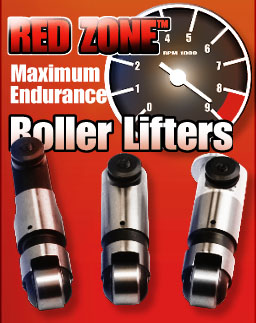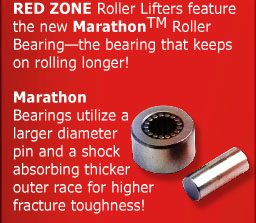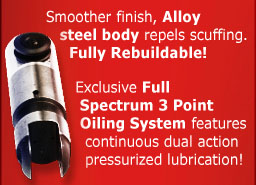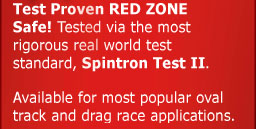|
|
|
|||||
|
|
Horton's season actually began in late 2001, when he prepared both himself and his "Trinity" 340-powered Dart for war. "I lay in bed at night dreaming about it," he said. "And my dreams told me that I'm 47 years old and I don't get these offers much more in life. This series was tailor-made for a person like myself -- local level only, no traveling. That's my kind of racing." His preparations including putting short front tires on the car, installing a new TCI converter and freshening up everything on the car. Horton checked it from front to back. "I need my best stuff to win this thing," he said. His '69 Dart, called "Trinity" after the movie series character of the 1970s, is powered by an essentially stock 340 engine, a slightly modified Chrysler three-speed and a good rear end. Horton put on a new set of Phoenix FX slicks just to run the series. He has had both his open car hauler and racecar for the past 26 years. He bought "Trinity" as a driver and converted it over to a Footbrake car. Horton also races a bone-stock '91 Lincoln, but left it at home this year to run the Summit SuperSeries with his more potent combination. "I only took the Lincoln when I was funnin'," he says. Nonetheless, he won three times this past season in the Lincoln. During the Summit SuperSeries season, he didn't race at any track other than Hinesville until he ran his minimum rounds, which was set by the rules at 50. "I didn't go to any other track at all. I didn't mess around, I went there to try and win that thing, and that's what I did," he said. It took him just eight weeks to win the series. No. 2 competitor was a motorcycle racer Joe Novak Jr., who raced out of IHRA's Division 3 at Milan Dragway. At Hinesville, there were about 15 others who raced the "X" number for the series. Horton had 40 round-wins and four losses out of a possible 53 rounds, and that gave him the 91-percent average. The class was an all-run Footbrake class, with five- and six-second cars in the mix -- "the works," Horton said. He lost his left leg in 1971 in a motorcycle accident on the highway going home from work when he was hit by a drunk driver. He had been going to the races for about four years before that. He had to relearn just how to race after the amputation. "You adapt to whatever you have to do to get the job done," Horton says. "Some of the other guys thought I was unsafe at the time, and they underestimated my abilities." He proved them wrong when he started winning track championships. Horton races with his right heel on the brake and his toes on the gas. He does a rare whomp-whomp-whomp burnout, stages and watches for the last yellow, adjusting the car to his leave spot on the tree on any given day. He shifts by himself. Hinesville was his SuperSeries track of choice, but Horton also has won championships at tracks from Jacksonville, Florida to Savannah, Douglas and Vidalia, Georgia. What is more remarkable is that this year, in addition to the Summit cash, the Reher-Morrison engine, the Grand Prix GTP and the Buell bike, Horton also won a track championship, at Hinesville, plus an IHRA Division 2 championship, plus the Summit SuperSeries world championship. That Division 2 win was also worth $11,000 plus a motorcycle if the competitor bought $1,000 from Summit before July 31. "I led it from day one," Horton says of the series at Hinesville, which got $5,000 from Sunoco Race Fuels for his win. "I won about 12 times throughout the year." How will that big win change his life, he was asked. "I don't worry about the money. I might buy me something to race with, you never know," Horton says. "I've never been a world champion. I'm 47 years old, and all the other guys are young in this thing. This level of competition is for young people. But it doesn't get any better than this. It was the best possible thing in my whole life that ever happened to me in racing. I had luck, I was good, and everything went together." Other Summit SuperSeries winners, including Horton and Novak, who won cash plus a turnkey Joe Monden Race Cars four-link dragster powered by a General Motors Performance Parts 502 crate engine, plus a Buell Blast Sport motorcycle, included Jay Hunison of IHRA's Division 5 at Alaska Raceway Park; Julian Scott Ball of Division 4, River City Raceway; and Kenny Jones of Division 1, Elk Creek Dragway. |
|
||||






